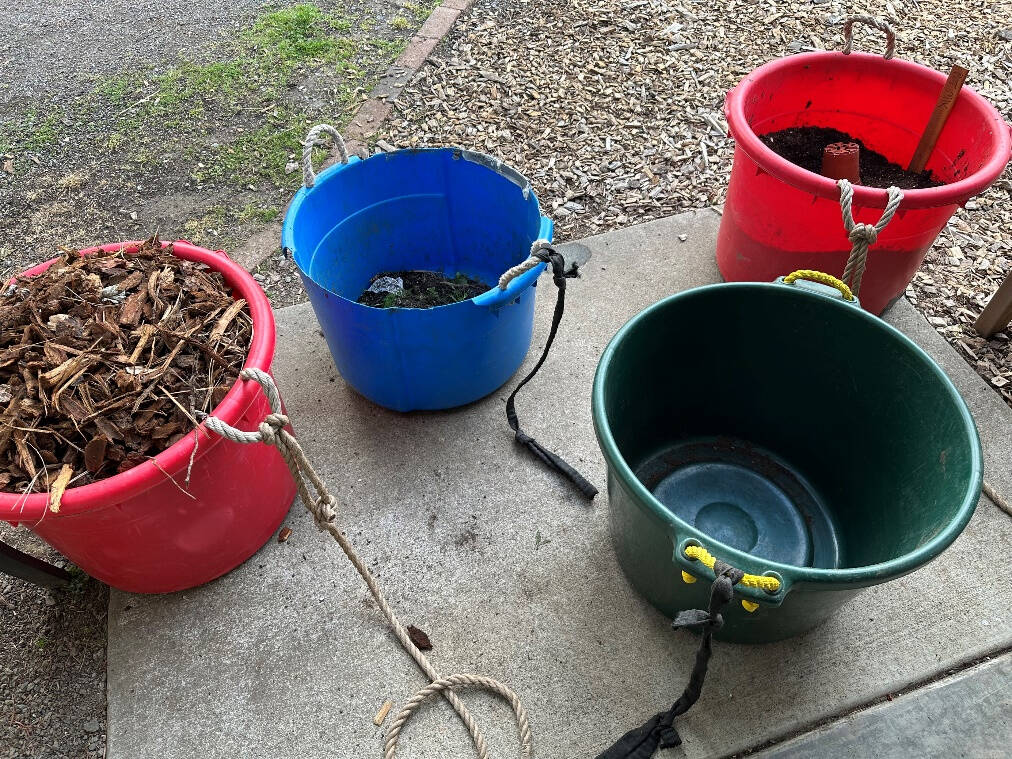The primary purpose of an accessible garden is to remove any physical barriers that interfere with the enjoyment of growing, smelling, feeling and moving within a garden. There are no firm rules about creating an accessible home garden, but there are helpful tips.
This is the last in a series of four articles that offer six tips on planning and constructing an accessible garden. Tips 1-4 discussed the importance of proper location, suitable size, personal safety and appropriate garden bed designs.
This article will discuss Tip 5-6, adaptable tool selection and other support systems. Benjamin Franklin gave sage advice: “The best investment is in the tools of one’s own trade.” If you are a gardener it’s never too early to evaluate your changing abilities and buy or modify tools to make them work for you.
Long-handled or telescoping tools allow gardeners to work from a sitting or non-bending position and extend their reach.
Lightweight tools, made from aluminum alloy, carbon fiber or plastic, are less fatiguing to use.
Tools with special grips or cuffs that fit onto the forearm can relieve hand, wrist, and arm strain and increase leverage.
Adapting your own garden tools is a great place to start and usually doesn’t require special materials. Almost anything can become an adapted tool.
For better control of a rake or broom (to prevent it from rolling over if your grip is not strong), drill a hole in the end of the handle if none exists and insert a piece of dowel. A piece of strong tape on either side will hold the dowel in place.
Use grip tape (used for sport equipment) wound around the handle of your tool to create a larger surface area to grip. D-shaped shovel handles allow more torque to strengthen your digging options.
Modify a bucket handle by increasing its size with foam or a section of 3/4 inch PVC pipe secured with sturdy duct tape. Tutorials are available online to use paracord to make a double handle for a 5-gallon bucket.
When purchasing tools, look for specially designed ergonomic designs that align with natural body mechanics and compensate for the constant repetitive motions commonly found in gardening chores.
Adaptive tools are a booming business. Do some research and if possible try them out to make sure they feel comfortable and natural when using. Ask friends, review customer ratings, and read online blogs. Catalogs and websites such as Gardener’s Supply offer great tools. After checking reviews and recommendations, buy a quality tool.
Tip 6 gives ideas on how to choose appropriate accessories to support your efforts in comfort.
Padded kneelers (stools with raised handles) can help gardeners who have difficulty getting up from a kneeling position. When turned upside down, the kneeler can also be used as a stool for tending raised beds, resting or other activities.
Keep frequently used tools close by in a tool belt, apron or portable container. This will limit stooping and trips back and forth to fetch different items.
Use small tarps as your mobile work surface to collect weeds or soil when working around patio areas. They’re light-weight and make it easy to drag loads. Repurpose old large tarps, cutting them into handy sizes for gardening. 6-by-8 feet or 8-by-10 feet are manageable. Sear the tarp’s cut sides with a lighter or torch to keep them from fraying.
A rolling cart or wagon can be a convenient tool collector. Organize a rolling cart to become a mobile “garden shed” housing regularly-used items and other accessories so that you can easily find what you’re looking for.
Large polyethylene (heavy-duty plastic) tubs, 10-15 gallon size, are available at many garden and feed stores. By attaching a length of thick rope to one side handle, you can easily drag small loads of weeds, mulch or soil, rather than using a wheelbarrow.
More detailed information about the six tips offered in this series of articles can be found in the WSU Extension publication Gardening for Life which can be downloaded free at pubs.extension.wsu.edu and entering MISC545E in the search box. Although it’s an older publication the material is still very relevant. However, some of the resources suggested may not be available.
Your garden should work for you, leaving you time to enjoy it. The most important part of gardening is to “stop and smell the roses!”
Anna Plager is a Master Gardener of Clallam County who has used accessible gardening practices for many years.



